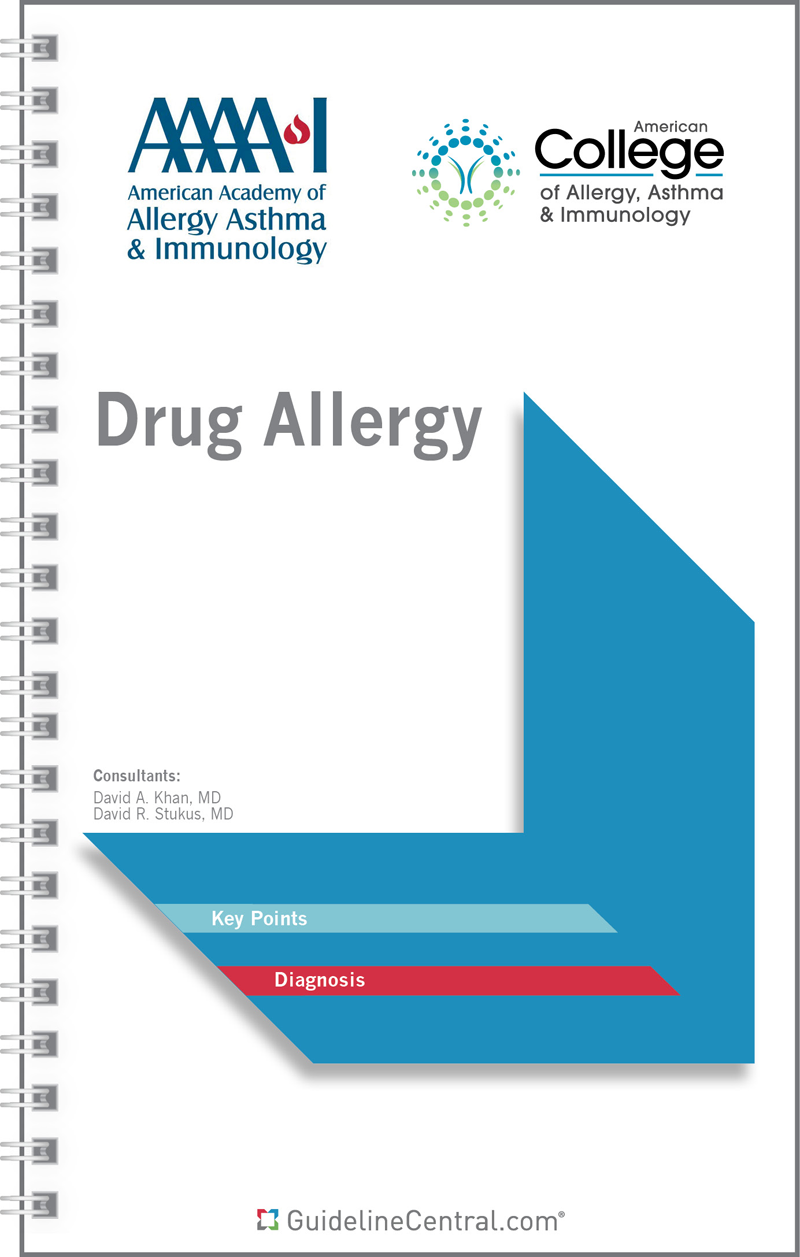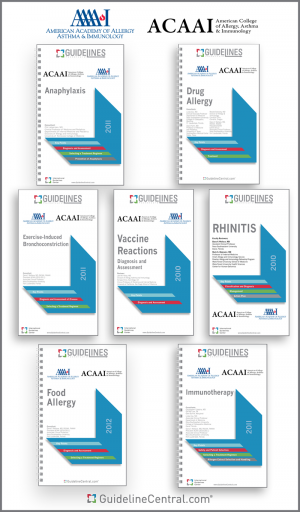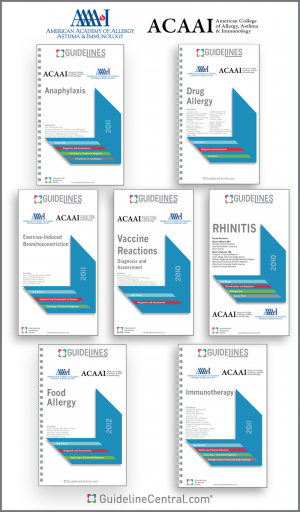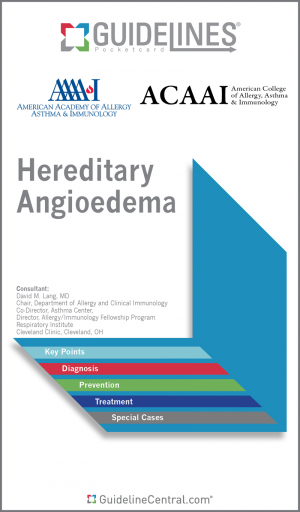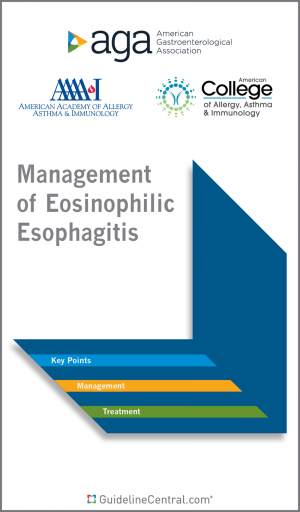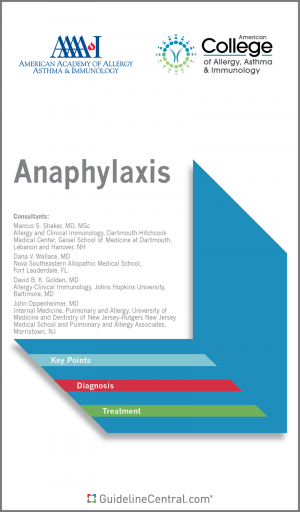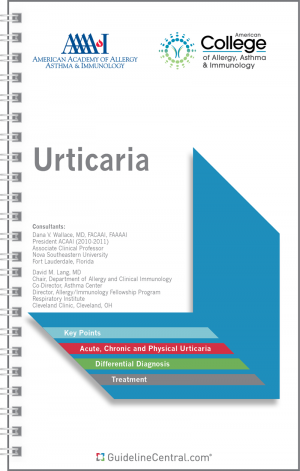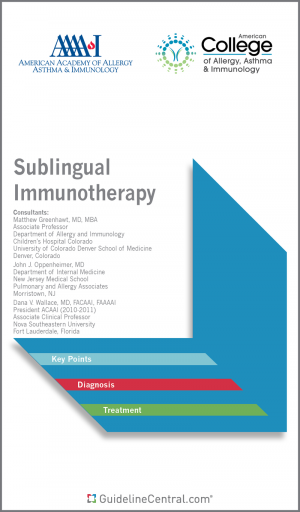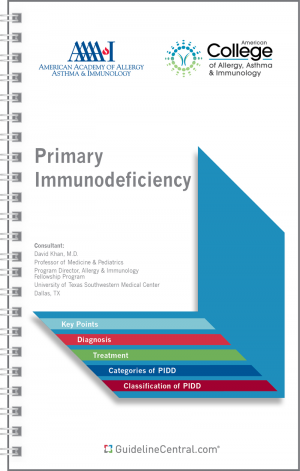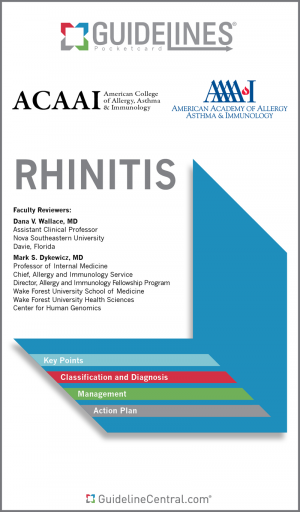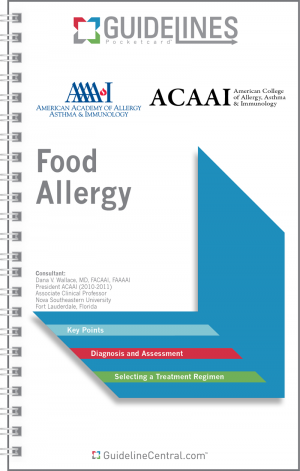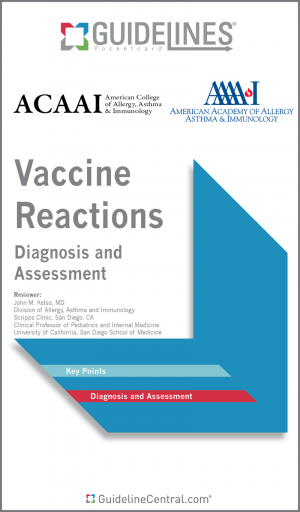Drug Allergy
- 32 pages
- Spiral Bound
- 80# Aqueous Coating
- 4.25" x 7.25"
- Ships in 5 – 10 business days
- Key Points
- Tables
- List of Consensus-based Statements
- Testing Procedures for Delayed HSRs
- Contraindications to Drug Challenges
- Open Drug Challenge Protocols for Immediate Reactions
- Single-blind Placebo-controlled Challenge Protocols
- Open Drug Challenge Protocols for Non-severe Delayed Reactions
- Testing Options for Delayed HSRs
- HLA Associations With Delayed Drug HSRs
- Drugs With No or Weak Evidence of Cross-reactivity
- Groups of Beta-lactam Antibiotics that Share Side Chains
- Immediate Hypersensitivity Cephalosporin Skin Testing
- Criteria For 1- or 2-step TMP-SMX Oral Challenge and Exclusion
- Classification of Common Aspirin/NSAID HSRs
- COX-1 and COX-2 Inhibiting Medications
- Clinical Characteristics Determining the Need for Challenge versus Desensitization in AERD Patients
- Graded Aspirin Challenge Protocol for Patients With Cardiovascular Disease
- Various Commonly Utilized Aspirin Desensitization Protocols for AERD
- NSAID Classification Based on Chemical Structure
- Rapid Low Dose Aspirin Graded Challenge for Cardiovascular Emergencies
- Incidence and Characteristics of Chemotherapeutic HSRs
- Figures
- Timeline of Drug HSRs
- Recommended Approach to Beta-lactam Administration
- For purchases under 100 in quantity, we suggest placing the order directly through the website.
- We offer group/institutional licenses for multi-user accounts (discount amount varies depending on the number of users).
- We are proud to offer special discounts to medical schools, training programs, students and more.
- We offer bulk purchase discounts based on number of copies and number of titles.
Contact Us for more details
The American Academy of Allergy, Asthma & Immunology (AAAAI) is a professional organization with more than 6,700 members in the United States, Canada and 72 other countries.
Description
This resource is for informational purposes only, intended as a quick-reference tool based on the cited source guideline(s), and should not be used as a substitute for the independent professional judgment of healthcare providers. Practice guidelines are unable to account for every individual variation among patients or take the place of clinician judgment, and the ultimate decision concerning the propriety of any course of conduct must be made by healthcare providers after consideration of each individual patient situation. Guideline Central does not endorse any specific guideline(s) or guideline recommendations and has not independently verified the accuracy hereof. Any use of this resource or any other Guideline Central resources is strictly voluntary.
You can also find this product included in these bundles!
